#the ghost of yotsuya
Text

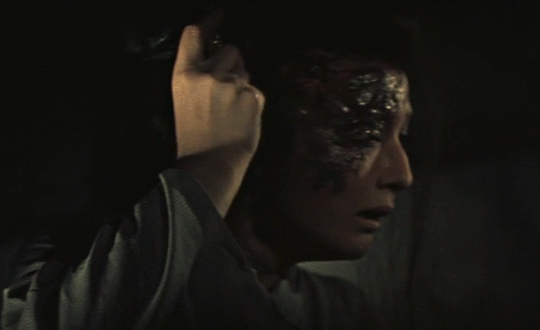
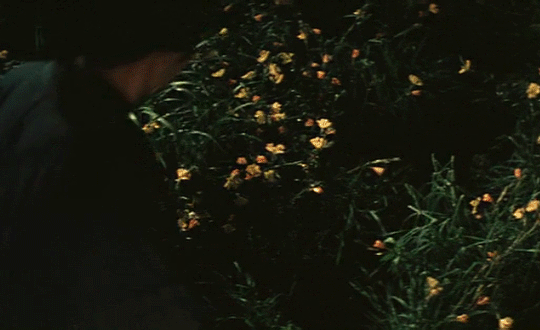

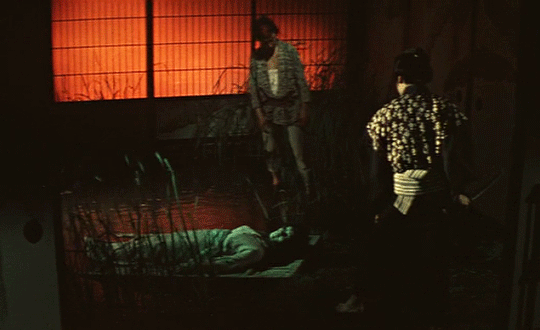

The Ghost of Yotsuya (1959) dir. Nobuo Nakagawa
11 notes
·
View notes
Text

Thursday, February 7, 2024
"You will not escape my vengeance."
113. THE GHOST OF YOTSUYA (Nobuo Nakagawa, 1959) - Japan - Theatrical (35mm) - Film Forum, Theater 1 - 76 minutes. Presented as part of the series Japanese Horror. New film #104.
3 notes
·
View notes
Text
On April 9, 2006 The Ghost of Yotsuya was screened at the Hong Kong International Film Festival.


#the ghost of yotsuya#the ghost of yotsuya 1959#tokaido yotsuya kaidan#nobou nakagawa#shigeru amachi#horror art#horror movies#horror film#horror#japanese horror#japanese film#japanese cinema#supernatural horror movies#supernatural horror film#supernatural horror#ghost film#ghost movies#tcm underground#movie art#art#drawing#movie history#pop art#modern art#pop surrealism#cult movies#portrait#cult film
2 notes
·
View notes
Audio
It is yet another TOKAIDO YOTSUYA KAIDAN (1959), but this time from experienced horror director Nobuo Nakagawa!
Balancing a return to its kabuki roots with a forward-looking use of colour and surrealism, this horror takes your hosts by storm! The film stars Shigeru Amachi, Katsuko Wakasugi and Shuntaro Emi.
Context setting 00:00; Synopsis 28:53; Discussion 44:01; Ranking 1:00:54
#podcast#horror#japanese horror#yotsuya kaidan#tokaido yotsuya kaidan#nobuo nakagawa#shigeru amachi#katsuko wakasugi#shuntaro emi#ryuzaburo nakamura#noriko kitazawa#jun otomo#masayoshi onuki#yoshihiro ishikawa#nanboku tsuruya#mitsugu okura#tadashi nishimoto#shintoho#the ghost of yotsuya
5 notes
·
View notes
Text
youtube
0 notes
Photo
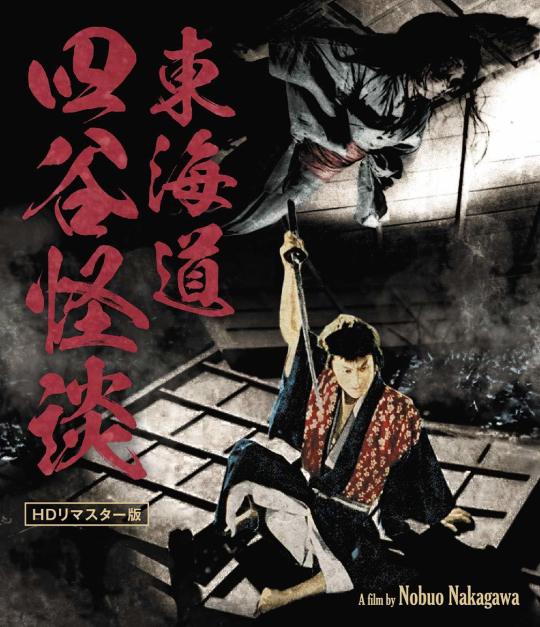
Films Watched in 2023:
56. 東海道四谷怪談/The Ghost of Yotsuya (1959) - Dir. Nobuo Nakagawa
#東海道四谷怪談#The Ghost of Yotsuya#Nobuo Nakagawa#Shigeru Amachi#Noriko Kitazawa#Katsuko Wakasugi#Shuntarô Emi#Ryûzaburô Nakamura#Runko Ikeuchi#Jun Ôtomo#Films Watched in 2023#My Post
1 note
·
View note
Text

Shinjiro Okamoto (1933-2020) — Female Ghost from Yotsuya Kaidan [acrylic on canvas, 1985]
90 notes
·
View notes
Note
(this is spacekrakens lmao) dude idk anything about like 1950s Japanese cinema, do you have any recommendations? looking for stuff to toss on the watchlist now that I'm a bit burned out on horror (unless you have some horror recs)
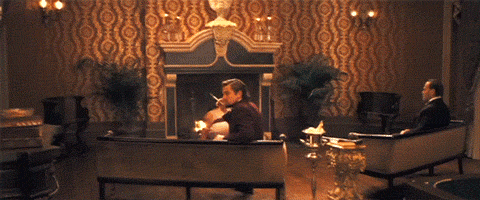
Hey! If you’re curious about Japanese cinema (particularly 1950s), there’s a lot of avenues to explore! Musicals, crime, horror, historical—it all depends on what mood you’re in. (Putting this under a read more because I'm DEFINITELY going to be long posting about this!!!) Hope this is useful to you lol.
(Also noting if anybody wants to add to this list with their own recommendations feel free!!)

With old school Japanese cinema, I’ll always recommend Akira Kurosawa (obviously). He’s made some of the best Japanese movies (and arguably, the best movies of all time imo) and I feel like his work is a good gateway. It’s readily available on physical media/streaming too.
Specifically ‘50s stuff; Hidden Fortress (1958) is a good adventure flick whose structure was swiped for Star Wars, Throne of Blood (1957) is Japanese Macbeth if you like Shakespeare, and if you don’t mind a longer movie Seven Samurai (1954) includes Toshiro Mifune acting like this;
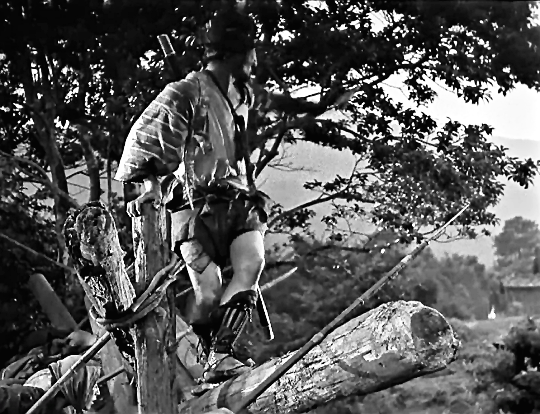
Gotta admit, though—my personal favorites from Kurosawa don’t come from the 1950s; Drunken Angel (1948) and Yojimbo (1961). One has a pathetic gangster as the main lead, the other is just a solid, breezy proto-action film (also has my beloved Unosuke but that's besides the point)
Some personal favorites of mine from the 1950s:
Life of a Horse Trader (1951) is a bittersweet story about a man trying to be a good single father to his son in the backdrop of Hokkaido. He tends not to be great at it. Stars Toshiro Mifune, the most famous face of Japanese cinema and for good reason!
Conflagration/Enjo (1958) is a single Buddhist acolyte’s fall into quiet insanity. Raizo Ichikawa is another amazing actor who I love! Also includes Tatsuya Nakadai who is the GOAT (in my heart).
Godzilla (1954) is AMAZING! If you liked Gozilla Minus One, it took a lot of familiar cues from this movie. It also technically counts as horror, depending on your definition.
Japanese horror from the 1950s:
Ugetsu (1951) (Not one I’ve seen personally, but it’s on Criterion)
The Beast Shall Die (1958) (American Psycho, but in Showa Japan. Tatsuya Nakadai is terrifying in this and absolutely despicable—stylish movie tho!)
Ghost of Yotsuya (1959) (Old-school Japanese ghost story. Honestly, there are so many different versions of this story on film that you can pick which version to watch and go from there—I’m partial to the 1965 version myself, because of the rubber rats and Tatsuya Nakadai playing a crazy person).
The Lady Vampire (1959) is the OG western-style vampire movie from Japan. Plays around with the mythos a lot, but hey our Dracula looks like this;

Misc movies that I think are neat or good gateway movies:
The Samurai Trilogy by Hiroshi Inagaki, which stars Toshiro Mifune as Miyamoto Musashi. Found that people otherwise uninterested in Japanese cinema really enjoyed this!
You Can Succeed, Too (1964) is one of my favorites from the ‘60s, also directed by Eizō Sugawa. A fun satire on the corporate world that's super colorful with catchy songs.
The Sword of Doom (1966) is also another favorite of mine, starring my beloved Tatsuya Nakadai as another bastard man (seriously though Ryunosuke is FASCINATING to me--). Fun gore effects and action scenes!
Kwaidan (1964) is an anthology of Japanese folk tales, labeled a horror film but in that kinda sorta old-school way. Beautifully shot by my favorite Japanese director Masaki Kobayashi (who, if you like this you should seriously check out his other work!)
#thanks for the ask!#akira kurosawa#tatsuya nakadai#toshiro mifune#raizo ichikawa#japan#film#godzilla#hidden fortress#seven samurai#drunken angel#yojimbo#enjo#sword of doom#kwaidan#you can succeed too#samurai trilogy#the lady vampire#ghost of yotsuya#ugetsu#life of a horse trader#throne of blood#ask
22 notes
·
View notes
Text
Why are most of the Japanese ghosts 'victimized women'? - the feminist answer to Japan's sexist society
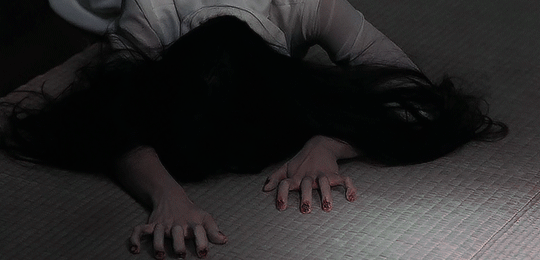
Let's talk a little about Japan and its horror culture. The "pale-dressed woman with black hair" ghost steriotype isn't an American invention, it came from the Japanese culture. This ghost is called Onryō (怨霊), a vengeful spirit that comes back from the dead to sick revenge against his/her killer or humanity itself. Onryō spirits mostly had violence deaths (murder, accident or suicide) and/or unfair lives. They are characterized as a pale person, with white clothes and a long, black hair. Some of the Onryō ghosts are marked with the violence they suffered before death. Male Onryōs can be found in the Japanese culture (cinema, mangas, animes, games and theatre), however, they are very rare and unusual, most of the Japanese ghosts are female. Female victims abused by men. After the iconic 2002 "The Ring", an American Remake of the Japanese best-seller Ringu, the Onryō image was introduced to the whole world.
Some of the most classic Japanese ghosts are: Oiwa, Okiku, Sadako Yamamura, Kayako Saeki, the Black Cat ghosts and Kuchisake-onna. All women. I will talk about them little by little and explain about their feminist essence. The Japanese culture was always male chauvinist and patriarchal, specially in the past. Women were treated as objects of male pleasure, they couldn't have any profission unless prostitution or cleaning/cooking. Men were the masters, women were the slaves. Many Japanese temples tought men that sexual activities with women was disgusting and exhausting, something that sucked vital energy. Sex with women should be ONLY for reproduction. It was a mysoginistic society, where the female body was faced as something vulgar and immoral. Women should mary as soon as possible (15-16 years old or less) or else they'll be called 'old whores'. Women couldn't even play in Kabuki shows (japanese traditional theatre) because it was considered immoral, the female roles were played by men. Rape, abuse (emotional and physical) and murder caused by men could be justified if their female victims were considered immoral women. Until today, women are oversexualized in Japanese culture specially if they are very young, hentais are a big example. There are Japanese companies that hire only men, there are victimized women that are still unheard and judged.
This male chauvinist opression has been answered for centuries with the legends of onryōs, curses and female revenge. The Japanese folklore and pop culture is full of feminists manifestations against the patriarchal society of Japan.
Oiwa (大岩)

This character appeared for the first time in the Kabuki best-seller show "Yotsuya Kaidan" (四谷怪談). She was a poor woman married to a greedy selfish man, Iemon. He was planning to marry a rich woman, but for this, he needed his wife to be all alone and defenseless, so he killed Oiwa's father. After that, he poisoned Oiwa with the intention of killing her, but she didn't die: her face melted and her hair felt. Iemon hired a man to rape his wife, then he could kill her with the excuse that she "cheated on him". However, the man was so disgusted with Oiwa's face that he couldn't rape her. Iemon, without any other choice, killed both Oiwa and the man he hired, throwing their bodies into the river. Iemon married a rich woman, but in his honeymoon, Oiwa's spirit came back from the dead and murdered both of them. The legend says she is still hauting her old village, and you get cursed by her spirit if you listen to her story (yes, I curses all of you😈😈).
Okiku (お菊元気)

The original story that inspired Koji Suzuki's Ringu series. Okiku was a poor employee that worked for a creepy rapey samurai named Aoyama Tessan. He wanted Okiku to be his lover, but she always denied it. One day, Aoyama planned to trap her: he gave her a closed bag with 9 coins, but he told her that there were 10 coins and that she should take care of them. Naïvely, Okiku took care of the bag for some days, until Aoyama came back and checked the coins. Again, there were always 9 coins, but he lied to her saying that there were 10, an employee couldn't doubt of her master's word so she never checked it before. Aoyama accused Okiku of stealing one of his coins. Desperate, she counted the coins: 1, 2, 3, 4, 5, 6, 7, 8, 9... over! No 10! Aoyama threatened Okiku, saying she could be spared if she agreed to be his lover. She denied for the last time. The samurai tortured the poor girl and throw her alive inside of a well. Okiku's ghost came back every single night to torment the samurai, forcing him to committ suicide. After Aoyama's death, a buddhist monk bought the land and freed Okiku's ghost after counting 'til 10, bringing her peace.
Kuchisake-onna (口裂け女)
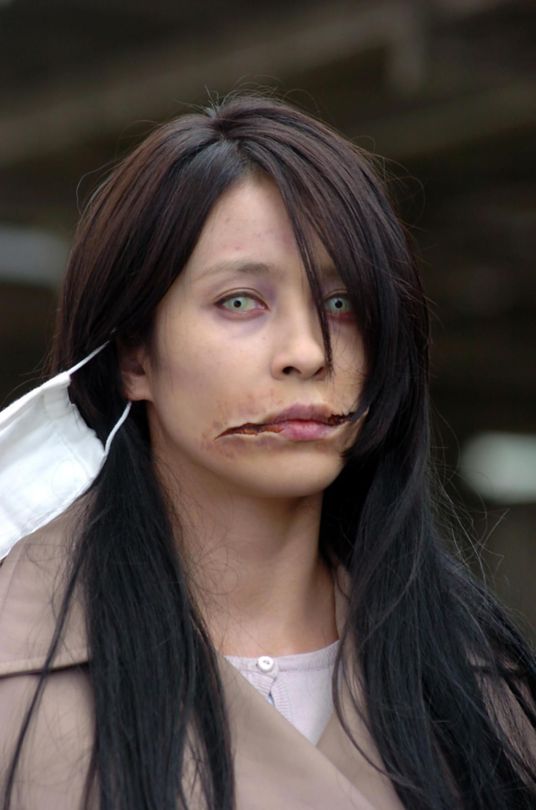
The legend of Kuchisake-onna tells about this woman with a cutted mouth. There are a lot of versions about the legend, but the most famous one is where she was murdered by her husband, who, droven by jeaously because of her beauty, cutted her mouth and skin with scissors. Kuchisake-onna appears in dark lone streets at night, asking you if she is beautiful. If you say she is, she will cut your mouth to be just like her. If you say she isn't, she will just kill you.
Black Cat - 1968 movie (黒猫)

A classic Japanese horror movie. A mother and a daughter were raped and killed by a group of samurais, and now they are vengeful blood-lustful ghosts. They hallucinate the samurais and everyone near their home with a black cat, that guide them to their house. They seduce them and kill them.
Sadako Yamamura (山村 貞子)
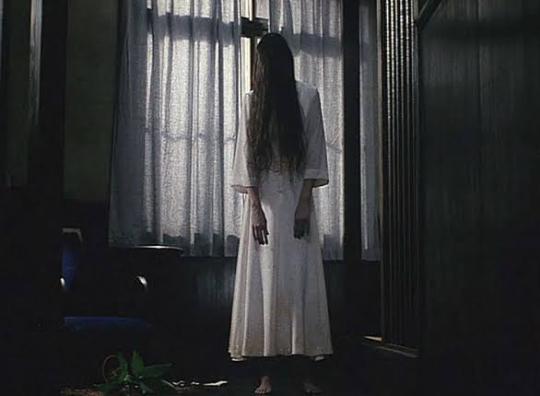
The most iconic Onryō and Japanese horror symbol of all. Sadako's story suffered retcoms during the Ring franchise. In the 1991s novel, she is a young intersex person (she identifies herself as female) who grew up in a toxic family, being explored because of her psychic powers. At 19s, she is raped by a doctor named Jotaro and throw alive inside of the well. In 1998s Ringu, she was a cruel sadistic child who murdered a journalist and ruined her mother's life. She was murdered by her step-father that wanted to save the world from her evil, but she became a vengeful ghost. In the 2000s Ringu 0, Sadako is portrayed as a victim, since she can't control her powers and is afraid of her biological dad, a sea demon. She was drugged and isolated by her step-father during her life, emotionally abused and explored in her adult life, collectively beaten after being exposed to an old scandal and lated 30 years to die inside of the well. In every version of the story, she uses her nensha and telepathic powers to record a videotape that murders their victims in seven days. As technology is her weapon, she crawls out of people's TV (except in the novel).
Kayako Saeki (佐伯 伽椰子)

Based in Oiwa's legend, Kayako Saeki was a lonely neglected girl that married a jeaously abusive husband, Takeo Saeki. She had a kid with him, Toshio. We have more details about their relantionship in the first 2000s movie Ju-On: The Curse, where Takeo abuses his wife and kid more than one month before the curse started. When Takeo discovered Kayako had feelings for her childhood friend, Kobayashi – who ironically was Toshio's teacher –, he broke her neck, murdered their black-cat, their young child and even killed Kobayashi's pregnant wife. Their suffering was so cruel that it started a deadly curse inside of the house, which killed Takeo, the teacher and curses everyone and anyone that enters it.
With all of these stories, and many other legends about monstrous female creatures and ghosts, we can notice that Japanese women always had a grudge against their opressive misogynistic society. Most of the horror Japanese movies portray women that were victimized by men and now are searching for revenge. If their society thinks their suffering and death is OK or justificable, then, they have no other choice than searching for their own justice.
Japanese society improved significantly during the years. Women now have voice, power, intelligence and place in the Japanese society. Divorces are permitted, they have laws against misogynistic violence, women can work and be solo mothers, majority of cultural and intelectual institutions are occuped by women. Japanese society was always impressive, intelligent and productive, but they still needed to be socially envolved. And it is working.

Social evolution surelly doesn't depend on movies or legends, but fictional works and culture does influence people for the good. It is because of humanity's fights, discussions and progress that our world, including Japan that once was one of the most sexists couples ever, that we are progressing and giving voice/space/respect to minories. We don't need female ghosts to avenge women or to "teach men", we need to look at our interior and our own mistakes, and learn how to fix them.
#japanese ghost#japanese movies#japanese society#Japan#🎌🇯🇵❤️#sadako yamamura#kayako saeki#kuchisake-onna#okiku#kuroneko#ringu#ju-on#ju-on: the grudge#oiwa#yotsuya kaidan#onryō#feminism#female ghosts#misoginy
352 notes
·
View notes
Text
I FIRMLY BELIEVE THAT THEY HAVE THE EXACT SAME VIBES.

#mieruko chan#meme#they're the same picture#ghost eyes#ghost eyes rudy#ghost eyes tobias#anime#anime meme#webtoon#miko yotsuya#hana yurikawa#tobias schneien#rudolph richardson#tumblr memes#memes#ghost eyes webtoon#ghost eyes meme#mieruko-chan
60 notes
·
View notes
Text

Yotsuya Kaidan (四谷怪談), ukiyo-e by Utagawa Kuniyoshi
The story of Oiwa and Tamiya Iemon is a tale of betrayal, murder and ghostly revenge. Arguably the most famous Japanese ghost story of all time, it has been adapted for film over 30 times and continues to be an influence on Japanese horror today. Written in 1825 by Tsuruya Nanboku IV as a kabuki play, the original title was Tōkaidō Yotsuya Kaidan (東海道四谷怪談, Ghost Story of Yotsuya in Tokaido). It is now generally shortened, and loosely translates as Ghost Story of Yotsuya.
First staged in July 1825, Yotsuya Kaidan appeared at the Nakamuraza Theater in Edo (the former name of present-day Tokyo) as a double-feature with the immensely popular Kanadehon Chushingura. Normally, with a Kabuki double-feature, the first play is staged in its entirety, followed by the second play. However, in the case of Yotsuya Kaidan it was decided to interweave the two dramas, with a full staging on two days: the first day started with Kanadehon Chushingura from Act I to Act VI, followed by Tōkaidō Yotsuya Kaidan from Act I to Act III. The following day started with the Onbo canal scene, followed by Kanadehon Chushingura from Act VII to Act XI, then came Act IV and Act V of Tōkaidō Yotsuya Kaidan to conclude the program.
The play was incredibly successful, and forced the producers to schedule extra out-of-season performances to meet demand. The story tapped into people’s fears by bringing the ghosts of Japan out of the temples and aristocrats' mansions and into the home of common people, the exact type of people who were the audience of his theater.
source
#yotsuya kaidan#ghost story#japanese folklore#japanese ghost story#ukiyo-e#kabuki#utagawa kuniyoshi#japan art#japan#japanology
50 notes
·
View notes
Text
Recently Viewed: Kenji Misumi’s Yotsuya Kaidan (1959)
[The following review contains MAJOR SPOILERS; YOU HAVE BEEN WARNED!]
Yotsuya Kaidan is Japan’s most popular and frequently adapted ghost story. While the core premise is basically consistent from version to version—penniless ronin Tamiya Iemon falsely accuses his wife of adultery as a pretext to divorce her and marry a wealthier woman, culminating in violence, regret, and vengeance from beyond the grave—the precise details of the narrative vary wildly between cinematic interpretations.

Shintoho’s 1959 film (helmed by Jigoku director Nobuo Nakagawa), for example, is a relentlessly dark (albeit vibrantly colorful) and bleakly cynical morality play; the protagonist is casually cruel and unrepentantly vile, with his grisly fate framed as karmic justice that the audience is intended to enthusiastically applaud. Keisuke Kinoshita’s 1949 duology, on the other hand, depicts Tamiya far more sympathetically; despite his (thoroughly reluctant) complicity in the terrible crimes committed against his spouse, he’s motivated primarily by economic factors beyond his control and the corruptive influence of his slimy, manipulative, verminous “friend,” Naosuke. Indeed, it is implied that the “haunting” is merely psychological—a subconscious manifestation of the central character’s guilty conscience. (Ironically, this “social realism” makes Kinoshita’s movie feel more subversive and revolutionary than Nakagawa’s comparatively lurid and gory effort.)
Kenji Misumi’s radically revisionist spin on the classic tale, however, probably takes the most liberties with the surprisingly malleable source material. Here, Tamiya (played by megastar Kazuo Hasegawa—which goes a long way towards explaining the particular “quirks” in his portrayal) is borderline heroic—an archetypal gruff-yet-chivalrous swordsman cut from the same cloth as Zatoichi and Tange Sazen. He’s also so passive and devoid of agency that he resembles the eponymous “specter” in Hammer’s The Phantom of the Opera, remaining virtually blameless for the (unnecessarily convoluted) series of events that result in his tragic downfall. He’s totally unaware of Naosuke’s devious conspiracy to humiliate, defame, and ultimately murder his wife, and although he still participates in an extramarital affair, the relationship appears to be purely transactional (and may not be overtly sexual; the extent of the “lovers’” physical intimacy is left deliberately ambiguous)—driven to desperation by poverty, he only indulges his mistress’ affections in exchange for money and lavish gifts. The editing, in fact, at one point explicitly juxtaposes his infidelity with that of his sister-in-law, who works part-time as a “waitress” at a “bathhouse” in order to supplement her husband’s meager income. Naturally, Tamiya’s relative “innocence” completely recontextualizes the story’s climax and denouement; whereas the character usually suffers an appropriately shameful, pathetic, undignified demise, Misumi allows him to achieve a measure of redemption via his glorious, honorable, beautiful death—sprawled at the feet of a bronze Buddha statue, wrapped in his wife’s favorite kimono, bathed in heavenly sunlight.

Pulpy, unsubtle, and unapologetically melodramatic even by Daiei’s standards, Yotsuya Kaidan isn’t the “best” adaptation of the original kabuki production, but Misumi’s various audacious departures from the “traditional” formula certainly distinguish it as one of the most interesting, unique, and undeniably compelling. For fans of chanbara and J-horror alike, it is essential viewing.
#Yotsuya Kaidan#Yotsuya Kwaidan#Ghost Story of Yotsuya#Kenji Misumi#Kazuo Hasegawa#Daiei#Japanese film#Japanese cinema#Japanese horror#J-horror#J horror#chanbara#Film Forum#chambara#film#writing#movie review
0 notes
Text
On October 28, 2010 The Ghost of Yotsuya was screened at the Mumbai Film Festival.


Here's some new art to mark the occasion!
#the ghost of yotsuya#tokaido yotsuya kaidan#nobuo nakagawa#shigeru amachi#horror art#horror film#horror movies#horror#japanese horror#japanese film#tcm underground#supernatural horror movies#supernatural horror#cult cinema#cult classic#cult movies#movie art#art#drawing#movie history#pop art#modern art#pop surrealism#portrait#cult film#new art#new fan art
2 notes
·
View notes
Text
HAPPY HALLOWEEN 2022: THE TOP TEN
Greetings, Creatures of the Night!
Once again it is that time of year where we reflect back and check in on what films are rocking the top ten of Scream’s Scene list of best to worst horror films of all time! (all time defined as 1895-1959)
If you’re looking for some genuine classics to check out this year, we’ve got you covered, with running times and where to find them!
#10. Körkarlen (1921)
The Phantom Carriage is a haunting exploration of the horrors of alcoholism, domestic abuse, poverty, and tuberculosis as well as a critique of Christian naiveté while simultaneously an encouragement of spiritual moral values. It has the tone and pace of a dirge, as it seeks to imprint its message on your very soul. All wrapped up in a chilling story of New Year’s Eve and the spectre of Death! The Phantom Carriage is available to stream on The Criterion Channel, and to rent for $5.49 on Pantaflix. 1h 30m.
#9. Tōkaidō Yotsuya Kaidan (1959)
The kabuki play Tōkaidō Yotsuya Kaidan has been adapted to film many times, but perhaps none reach the heights of horror as Nobuo Nakagawa’s colour adaptation. Inspired both by kabuki and by the lurid style of Hammer Horror, this version of the classic Japanese ghost story delivers on a stylish, entertaining, and spooky story of haunting and revenge! Tōkaidō Yotsuya Kaidan is available to stream on The Criterion Channel. 1h 16m.
#8. I Walked With a Zombie (1943)
The second Val Lewton produced film on the list, I Walked With a Zombie is perhaps best described as Jane Eyre in the Caribbean, but what is surprising is that the film is also a well researched depiction of Voodoo practices for 1943. The haunting imagery, sparse sound design, and dreamlike poeticism of this film might make it among the most unique zombie movies you’ve ever seen, made in a time with zombies were supernatural undead slaves, instead of reanimated undead cannibals. Do yourself a favour and check it out - it’s available to buy online in SD for $9.99 from Apple iTunes, and $14.99 on Amazon Video, Google Play Movies and YouTube. 1h 8m.
#7. The Old Dark House (1932)
James Whale’s definitive take on this traditional mystery thriller formula is a movie that will have you laughing right until the moment it has you screaming. In some ways, it’s a movie of clichés, with the protagonists seeking shelter in an old mansion during a rainstorm in the night and having to deal with the reclusive family they find within. But the dark, brooding cinematography, and truly shocking twists that rivet up the intensity over the running time, all contribute to make this a harrowing watch. It’s one part Rocky Horror Picture Show, one part The Addams Family, and one part The Texas Chain Saw Massacre. I’m not kidding. The Old Dark House is currently streaming on AMC+, Fandor, Flix Fling, and Tubi. 1h 10m.
#6. Horror of Dracula (1958)
Hammer Films had been producing X-rated horror and sci-fi content for a while by the time they got around to producing an adaptation of Dracula, but everything they learned from the success of The Curse of Frankenstein they applied tenfold to Dracula. From the subversive opening act to the shockingly graphic (for the time) finale, this film is full of action and excitement, as well as a sexually feral Count played by Christopher Lee for the first time. A Halloween crowd pleaser! Horror of Dracula is available to rent for $4.99 on Apple iTunes, Cineplex, Google Play Movies, Microsoft Store, and YouTube. 1h 22m.
#5. The Spiral Staircase (1946)
This RKO classic is another great take on the old dark house subgenre, from noir director Robert Siodmak. A masterpiece of suspense, featuring wonderful production design and dynamite performances from its cast, this movie will draw you in to the world of a mute servant named Helen trapped in a dark manor on a stormy night with a whole cast of lunatics! A forerunner of giallo (no, really!), this classic and classy thriller is not to be missed! The Spiral Staircase is currently streaming on Flix Fling. 1h 23m.
#4. The Fly (1958)
While the 1986 remake may be more well known today, the original rendition of this body horror classic still retains a punch with its central mystery, compelling drama, and traumatic ending. Excellent creature effects and memorable moments like a woman screaming seen through compound eyes cement this as one of the great sci-fi/horror films of its time! The Fly is currently available to rent for $4.99 on Apple iTunes, Google Play Movies, Microsoft Store, and YouTube. 1h 34m.
#3. Gojira (1954)
Ishiro Honda’s classic giant monster movie, the progenitor of all kaiju and tokusatsu movies to come, is a masterpiece of ingenuity and imagination. But more than that, it’s a powerful statement about the horrors of nuclear war, an angry and relentless funeral dirge mourning for the Japanese lives lost and raging against the American foreign policy that continued to poison Japan with radiation even after the war. Godzilla is an apocalypse personified, the great revenge of the natural world against the hubris of man that has harmed it. But Gojira is also a film about the immense weight of personal and scientific responsibility weighed against the greater good, and its position on the use of weapons of mass destruction is perhaps more nuanced than you’d expect. Don’t let the campy reputation of Godzilla in the West fool you. Clear your mind of that and sit down to watch this powerful black & white epic. Gojira is streaming on Crave, The Criterion Channel, Plex, and Starz, and can be rented for $4.99 on Apple iTunes. 1h 38m.
The American adaptation Godzilla, King of the Monsters! (1956) is also worth a watch, and is available on The Criterion Channel, Plex, Tubi, and to rent on iTunes.1h 20m.
#2. Cat People (1942)
Cat People is brilliant. The first of Val Lewton’s horror movies for RKO, it best exemplifies his shadow drenched, suggestive, adult, contemporary, and ambiguous brand of horror. Irena is convinced that if she experiences sexual excitement, she will turn into a black panther and kill the man she loves. Her husband is convinced it’s all in her head. What is the truth? Cat People gives the viewer plenty to chew on while being the first horror movie to understand that less is more, that the monster is scarier if you can’t see it, and also how to pull off a jump scare.You can find this absolute classic to stream on Amazon Prime, and to purchase for $9.99 on Apple iTunes, Google Play Movies, and YouTube. 1h 10m.
#1. Dr. Jekyll and Mr. Hyde (1931)
SIX YEARS RUNNING!
Early on in the first Hollywood horror craze, Paramount Pictures managed to outdo their main competitor Universal with this masterpiece from director Rouben Mamoulian. With a use of sound, visuals, effects, script, and performance far beyond what most films were doing at the time, this adaptation reigns supreme among other versions of the same story. Fredric March utterly inhabits the dual title role, but it’s Miriam Hopkins’ performance that will stick with you in this superb examination of domestic abuse, alcoholism, and the beast that dwells within us.
Currently for rent in SD on Apple iTunes, Google Play Movies, Microsoft Store, and YouTube for $4.99. 1h 38m.
A new top ten for a new year, Creatures of the Night! But will Dr. Jekyll & Mr. Hyde ever be knocked from it’s lofty perch? Keep tuning in to Scream Scene each week on Wednesday to find out! Happy Halloween everybody!
#halloween#scream scene podcast#top ten#classic horror#japanese horror#hammer horror#phantom carriage#ghost of yotsuya#i walked with a zombie#the old dark house#horror of dracula#the spiral staircase#the fly#godzilla#cat people#dr jekyll and mr hyde#christopher lee#peter cushing#vincent price#frederic march#simone simon#shintoho#rko#universal#hammer#20th century fox#toho#paramount
31 notes
·
View notes
Text
youtube
0 notes
Text

ㅤ “The mind is its own place, and in itself can make a ㅤㅤㅤㅤㅤㅤㅤheaven of hell, a hell of heaven."
ㅤㅤㅤㅤㅤㅤㅤㅤㅤㅤㅤ—Paradise Lost, by John Milton.
'Dies Irae' Is a yandere visual novel, it contains sensitive topics like abuse, depression, ㅤㅤㅤㅤ suicide, self-harm, etc. Contains religious themes as well.
ㅤㅤㅤㅤㅤㅤㅤ // ✦ 𝐓𝐇𝐄 𝐂𝐎𝐃𝐄.
"If you can hear me, this is a message from me, your true God. The world is going to end soon, and I've chosen you to be a part of myㅤㅤㅤㅤㅤㅤㅤㅤㅤㅤㅤㅤbrand-new paradise."
You wake up from a long coma, the world is moving fast and you need to adapt to society again. But not only two years have passed since the last time you saw this sky.
You don't remember anything.
And all of this... seems off.
Since when the sky was so red? Why does it feel like reality is colliding with itself? Why... only you are haunted by these visions of a distorted world when everybody seems to live a normal life- you start to think you're going crazy, maybe the amnesia is affecting you, maybe you weren't ready to go back into society again.
That is until you meet people that have the same visions as you.
ㅤㅤㅤㅤPeople like you. People chosen for the New Paradise.
𝘋𝘌𝘈𝘛𝘏 𝘖𝘍 𝙁𝘼𝙄𝙏𝙃 ✦ 𝘋𝘌𝘈𝘛𝘏 𝘖𝘍 𝘗𝘌𝘈𝘊𝘌 𝘖𝘍 𝘔𝘐𝘕𝘋
ㅤㅤㅤㅤㅤㅤㅤㅤㅤㅤㅤ // 𝐓𝐇𝐄 𝐇𝐄𝐑𝐃.
Tatsuya — The Hedonist.
"If people were only guided by what makes them feel good, don't think this world would be a happier place?"
// Playful and mischievous. He doesn't seem to mind the distorted vision of the world around him, in fact, he revels in being one of the chosen for the New Paradise. He's in search of the 'One and Only True Form of Love', will you be his final lover?
Yuuta — The Contrite.
"You think you can save someone like me? I'm already lost in the endless sea of chaos, don't come near me if you don't want to drown yourself too."
// Quiet and Sharp. Yuuta only wants to be like a ghost. Always pushing people away from him. Even if the world is ending, he doesn't seem to care, after all, he's got nothing to lose. Will you be his salvation or his demise?
Yotsuya — The Liar.
"Even if the world collides and everyone dies, I hope I'll be the last one that gets to look at your face, feel your last breath on this earth."
// Reserved and Timid. Yotsuya is not what he seems to be, he's a nice person, but sudden changes of mood hint at something deeper and darker lurking inside of him. Will you accept or despise his true self he hides so much?
Kurosaki — The Nihilist.
"If a thing such a god exists, I'll be the judge of his own creation."
// Kind and Patient. Taiga Kurosaki is the only person you can fully rely on. He's very mysterious and rarely talks about himself. Seems to be the only one of the four not aware of the changes in reality. Who even is he?
DEATH OF HEAVENS ✦ PUNISHMENT ✦ RETRIBUTION
"The Dies Irae, that's what he calls it, the day world is going to
end."
"I just hope he's a merciful god; The 'God of the Hypercode'."

01011001 01101111 01110101 00100000 01100100 01101001 01100100 01101110 00100111 01110100 00100000 01100110 01101111 01110010 01100111 01100101 01110100 00100000 01100001 01100010 01101111 01110101 01110100 00100000 01101101 01100101 00101100 00100000 01100100 01101001 01100100 00100000 01111001 01101111 01110101 00111111
𝐏𝐑𝐀𝐈𝐒𝐄 𝐓𝐇𝐄 𝐂𝐎𝐃𝐄.
383 notes
·
View notes